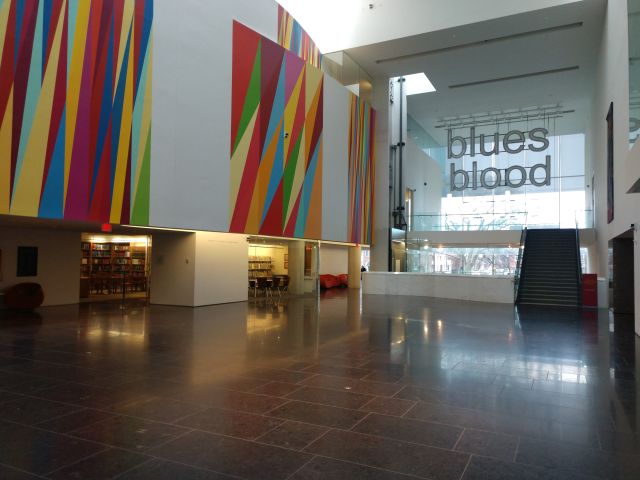This month I started working on Chapter 5, which focuses on the first iteration of the Virginia Museum of Fine Arts Artmobile (1953-1994). Whereas my previous chapters have looked at outreach exhibitions staged in extant buildings such as libraries and schools, or repurposed homes or commercial venues in the case of the Community Art Center Project, this chapter will consider exhibitions in self-contained, mobilized spaces like trailers or trucks. While they intersect in a lot of ways, from cooperating with schools to emphasizing access, I also believe that artmobiles have their own spatial qualities that merit closer consideration.

While there are plenty of examples of artmobiles in the history of US art access, I decided to focus on the VMFA Artmobile for a couple of reasons. From a practical standpoint, the VMFA and its archives are only an hour from my home in Williamsburg, so I don’t have to travel as far or as long to access them. More significantly, the program is striking for its longevity, running for around forty years in its initial run. The artmobile’s lifespan alone suggests there was sufficient museum and community support to warrant its continuation (and its revival in 2018 implies that interest remains present). Additionally, having the opportunity to follow a program over several decades could be interesting in terms of discerning any changes in art access patterns over time.
Since the start of the New Year, I’ve been visiting the VMFA archives to collect data. Rather than do all my archival work in two or three consecutive days, as I had done on my trips to New York and Minneapolis, I’ve been visiting the archive once a week. I typically visit on Tuesdays or Wednesdays, spend about five or six hours going through documents, and return to Williamsburg at the end of the day. If I get there before the reading room opens, I check out a gallery or exhibit on view in the museum. As such, these visits feel less like a full-blown research trip, a total pause in my regular schedule, and more like a regular workday that happens to be in a different location. Since the VMFA allows photography, I’ve been taking pictures of documents, but as with the Walker Art Center, I don’t photograph everything. Instead, I skim the documents and take the images that feel most relevant to my specific interests. During the rest of the week, I upload these photos into Tropy and label them, as I’ve done with all my other archival images. I’ve made two full-day visits so far, and I hope to wrap everything up next week.

In terms of the actual documents themselves, the first thing that struck me is the number of materials. Saving perhaps the Roswell Museum, this is the most thorough archive I’ve encountered so far. While the number of boxes aren’t that different from the Walker or the Met, the folders inside them are packed with letters, schedules, invoices, and other documents. The variety of materials is also striking. In addition to the usual correspondence and checklists, I’ve seen blueprints for the artmobile, descriptions of the kinds of security or fire systems installed, and other technical minutiae the other repositories I’ve visited haven’t included. From a mobilities standpoint, this archive has a richness and depth that the others don’t have, and while my own research has shifted to consider institutional relationships, this material is fascinating and could make for a great article if it doesn’t make it into the dissertation.
The other quality I’ve observed is the expanse of time represented in the archive, a challenge I have not had to contend with yet. Whether it’s the Met’s Neighborhood Circulating Exhibitions or the CACP, the programs I’ve studied up to now have only lasted for a few years, less than a decade in even the longest-lived ones. The artmobile program, by contrast, was around for about 40 years. One thing I’ll need to contend with in this chapter, then, is determining how far I need to take this history to make my larger argument. Do I need to focus on the entire chronological duration of the program, or do I just concentrate on the early years? I’ll have a better idea once I’ve gone through everything, but it’s something I’m already thinking about.

Indeed, arguably the great challenge with this chapter will be finding a way to manage all the documents associated with it. To be honest, I think there’s enough in the archive to begin a book on the VMFA and the broader artmobile movement. Each chapter could take on a different decade and contextualize the program within both the artmobile movement and cultural history as a whole, from anti-Communism sentiments and the promotion of democratic living to the Great Society and beyond. Maybe I’ll write that book one day, but that’s for the future. Right now, I need to figure out how these materials fit into the rest of the dissertation and complete that story.
I’ll definitely have my work cut out for me this semester. Still, there are worse research problems to have than having too much good material available.